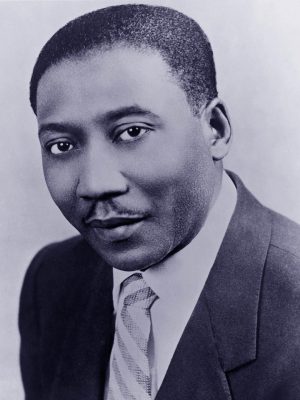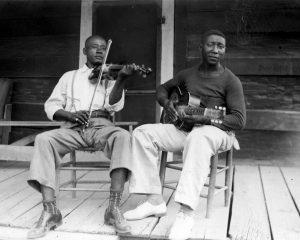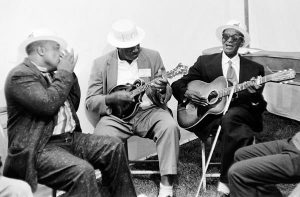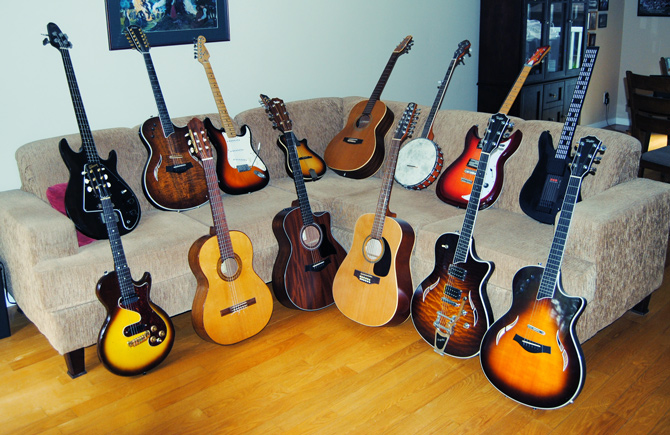Many black people from all walks of life migrated to the north for jobs and many of them settled in Chicago. One of these travellers was McKinley Morganfield (1913-1983), born in a Mississippi county that is not conclusively known. His grandmother, Della Grant, raised him after his mother died shortly after his birth. Grant gave him the nickname “Muddy” at an early age because he loved to play in the muddy water of nearby Deer Creek.
Muddy Waters grew up on Stovall Plantation near Clarksdale, Mississippi where the remains of the cabin where he lived in his youth are now preserved as the Delta Blues Museum. In August 1941, Alan Lomax, Assistant in Charge of the Archive of Folk Song of the Library of Congress, went to Stovall Plantation to record various country blues musicians including Muddy Waters, who played at that time with a fiddler named Henry “Son” Sims (1890-1958). Lomax came back in July 1942 to record them again. Both sessions were eventually released by Testament Records as an album entitled “Down on Stovall’s Plantation.”In 1943, Muddy headed to Chicago with the hope of becoming a full-time professional musician. He lived with a relative while driving a truck, working in a factory by day and performing at night. In 1944, he bought his first electric guitar and then formed his first electric combo out of necessity. Electrifying his sound was the only way to be heard above the shouts, arguments, fights and flying beer bottles in the boisterous Chicago clubs of the era. The beer bottles in particular forced many musicians to play behind a protective fence of chicken wire.
In studying the evolution of blues music, you readily see that the modern concept of 12-bar blues was more and more incidental the further back you go. Artists like Mississippi Fred McDowell and John Lee Hooker played their music without being constrained by a rigid tempo. The music simply flowed organically. Being one of Muddy’s earliest recordings on Chess Records, “Louisiana Blues” follows along those lines. Muddy sings and plays guitar with Little Walter Jacobs on harmonica, Ernest “Big” Crawford on upright bass, and drummer Elgin Evans tapping on a piece of wood. It is blues at its very core, primal and unadorned.
“Louisiana Blues” makes mention of a “mojo hand.” In African-American spiritualism, a mojo is a spell that can be carried with or on the host’s body, consisting of a bag containing one or more magical items. Alternative American names for the mojo include gris-gris and mojo hand.
I add a mandolin on my version of “Louisiana Blues.” Although the mandolin has been associated with blues music since the days of W.C. Handy (1873-1958), I first heard it played in blues songs by the great James “Yank” Rachell (1910-1997) on some of the very influential recordings of Sleepy John Estes (1899-1977).Richard Séguin – voice, slide guitar, Dobro resonator guitar, mandolin, sampled percussion.
Copyright Disclaimer under Section 107 of the Copyright Act 1976 : allowance is made for « fair use » for purposes such as criticism, comment, news reporting, teaching, scholarship, education and research.



